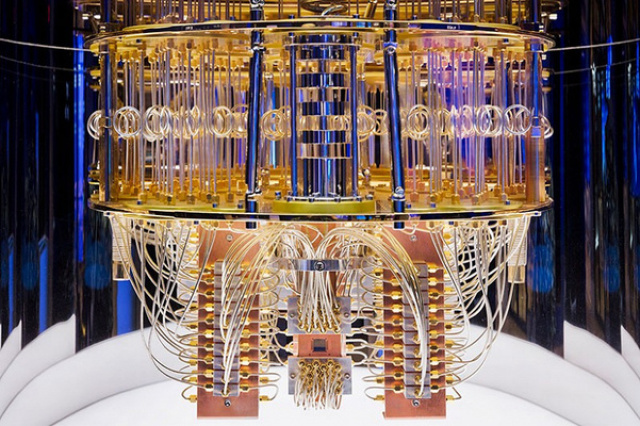The new platform proved to be very, very promising at the start: a single electron on solid neon maintained a superposition state for a long time.
Scientists have significantly diverged in their views on the ideal quantum computer. It is proposed to take superconducting qubits, optical traps and atoms (ions) under various conditions, as well as traps for electrons in semiconductors and not only. All this together and separately has been seriously studied for over 20 years, but there has never been an ideal solution. Perhaps the basis for an ideal qubit will be neon cooled to a solid state.
In a recent article in the journal Nature, a team of specialists led by the Argonne National Laboratory of the US Department of Energy announced about the creation of a new platform for the formation of qubits (quantum bits). The scientists used pure neutral neon gas as the basis of the platform, which was cooled to a solid state. The neutrality and purity of neon guaranteed the highest degree of noise immunity of the qubit from external influences and, consequently, its stability — the ability to preserve quantum states for a long time.
Scientists used an electron as the actual qubit. The electron was emitted by an ordinary filament of an incandescent bulb when heated and fell on the surface of the cooled neon, where it was trapped. In the image above, the tungsten filament emits electrons, which are captured by (red) neon cooled to a solid state. The circuit is controlled by a superconducting circuit under a neon cube. Blue shows the quantum state of an electron on the neon surface (the wave function in the artist's view).
In a series of experiments, scientists have shown that a single electron on a solid neon maintained a superposition state for a long time — the coherence time turned out to be comparable to those variants of qubits that have been in development for over 20 years. In other words, the new platform proved to be very, very promising at the start. Another question is: will it become the basis for ideal qubits? Scientists will look for an answer to this in new research.
Following this, another news came from Argonne National Laboratory — about the most powerful supercomputer.
Rick Stevens, deputy director of the Argonne National Laboratory (ANL), announced at the Intel Vision 2022 conference in Dallas (Texas) this week about the start of installation of the Aurora supercomputer, which after final commissioning will have a peak performance of more than 2 Eflops. Aurora will combine more than 10,000 blade servers with CSR as part of the HPE Cray EX (Shasta) platform.
Each node will be equipped with two Intel Xeon processors Sapphire Rapids with HBM memory and six Intel Xe Ponte Vecchio accelerators. The nodes will be joined by the Cray Slingshot interconnect. The laboratory's specialists have already deployed Intel DAOS storage, control nodes and cooling infrastructure, as well as implemented test clusters for debugging and checking software compatibility with new processors and accelerators. The laboratory will use Intel oneAPI as a new, unified software development model. Stevens explained that unification will allow using one code base for all computing blocks of any type.
Stevens also announced that Argonne National Laboratory has begun accepting orders to perform calculations on a supercomputer for scientific projects. "You can place an order for economic and industrial research if you are interested in making breakthroughs in science and technology," the scientist said. — We accept orders, set up developer accounts and involve teams on early systems to create software so that, on the first day when Aurora starts working, we already have applications running."
Aurora is one of three exaflops systems designed to ensure the leadership of the United States in the field of supercomputers. Since the announcement in 2015, the project has undergone a number of fundamental changes. In particular, its peak performance was increased to two Eflops, and the launch was eventually postponed to 2022. Two other American exaflops systems under development are Frontier (1.5 Eflops, Oak Ridge National Laboratory, 2022) and El Capitan (2+ Eflops, E. Lawrence Livermore National Laboratory, 2023). However, China seems to be in the lead in the exaflop race so far.

